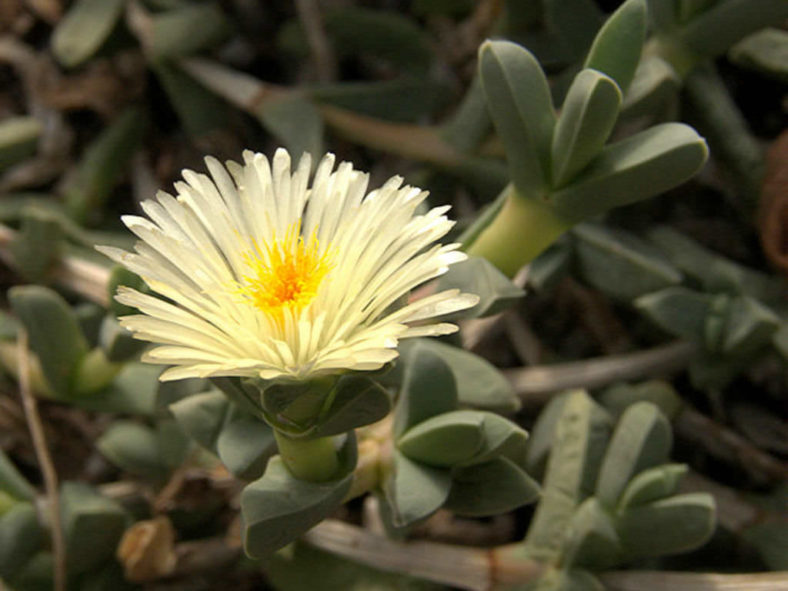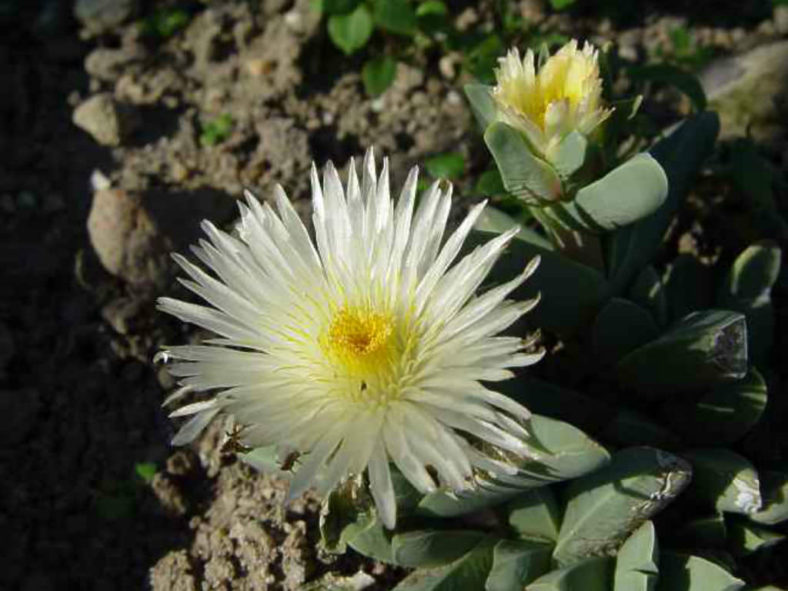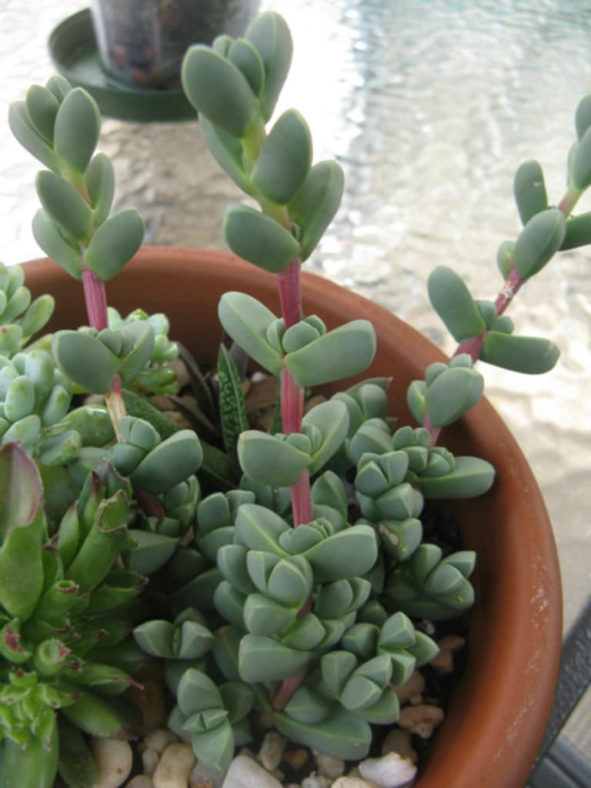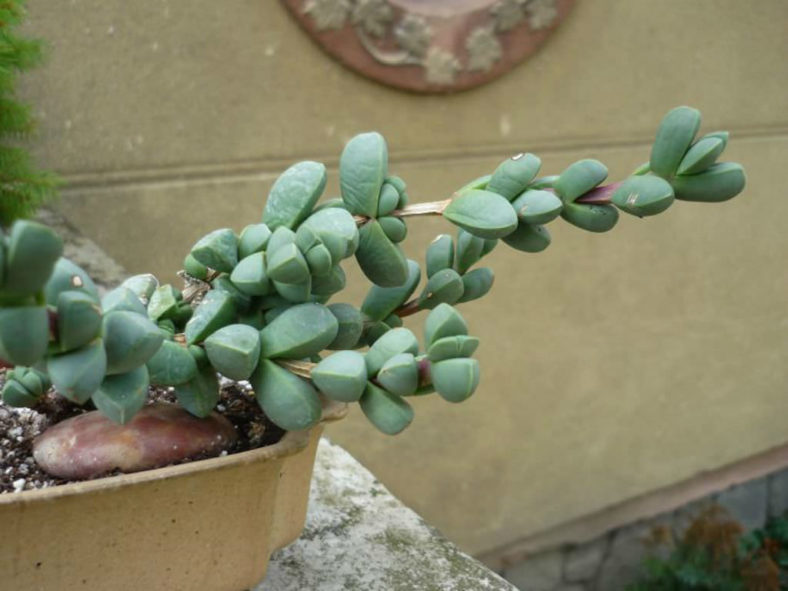Scientific Name
Corpuscularia taylorii (N.E.Br.) Schwantes
Common Name(s)
Ice Plant
Synonym(s)
Delosperma minimum, Delosperma taylori, Delosperma taylori var. albanense, Mesembryanthemum taylori
Scientific Classification
Family: Aizoaceae
Subfamily: Ruschioideae
Tribe: Ruschieae
Genus: Corpuscularia
Origin
Corpuscularia taylorii is native to South Africa.
Description
Corpuscularia taylorii is a compact succulent subshrub with upright or ascending branches with lovely grey-green leaves. The succulent branches emerge from a thick taproot and can grow up to 8 inches (20 cm) long, rooting at the nodes. The leaves are triangular in cross-section and can turn shades of pink, purple, and red when exposed to full sun.
The flowers are solitary and daisy-like with petals that range from white to pale yellow, often with pink-suffused tips. They appear in spring and summer and can reach up to 1.6 inches (4 cm) in diameter.
Corpuscularia taylorii is similar to Corpuscularia lehmannii but has longer internodes, while the latter is more compact.

Hardiness
USDA hardiness zone 8b to 10b: from 15 °F (−9.4 °C) to 40 °F (+4.4 °C).
How to Grow and Care
Delosperma plants grow in USDA plant hardiness zones 5-9 and bloom for most of the summer and fall. Their foliage is mostly evergreen, making them a great year-round ground cover. However, while the plant is evergreen, it will often have some foliage dieback in the winter.
Delospermas prefer full sun but can tolerate some light shade in the garden. Because Delospermas are succulents, they do not tolerate wet soil but do well in poor soil. In fact, wet soil, especially during winter, is likely to kill the plants. However, these plants can become invasive in areas where the soil stays consistently dry, so it is best to consider this when planting them.
The Ice Plant can be propagated by division, cuttings, or seeds. If propagating by division, dividing the plants in the spring is best. Cuttings can be taken anytime in the spring, summer, or fall. When grown by seeds, scatter them on the soil's surface and do not cover them, as they need light to germinate.
See more at How to Grow and Care for Delosperma.
Links
- Back to genus Corpuscularia
- Succupedia: Browse succulents by Scientific Name, Common Name, Genus, Family, USDA Hardiness Zone, Origin, or cacti by Genus
Photo Gallery
Click on a photo to see a larger version.



